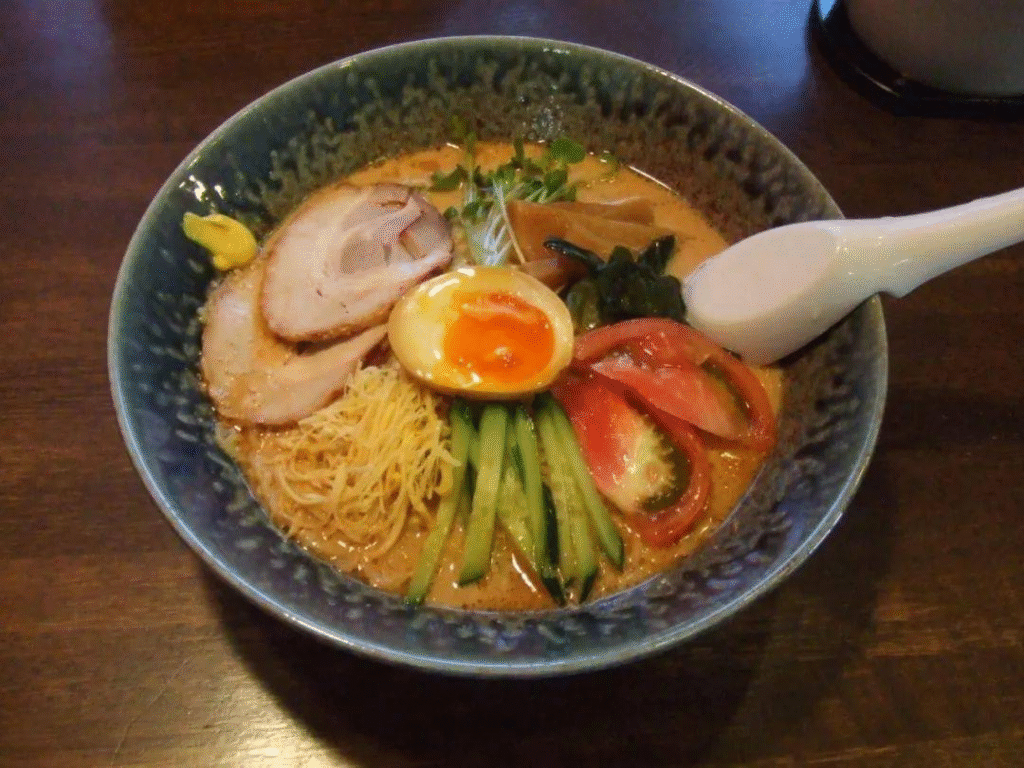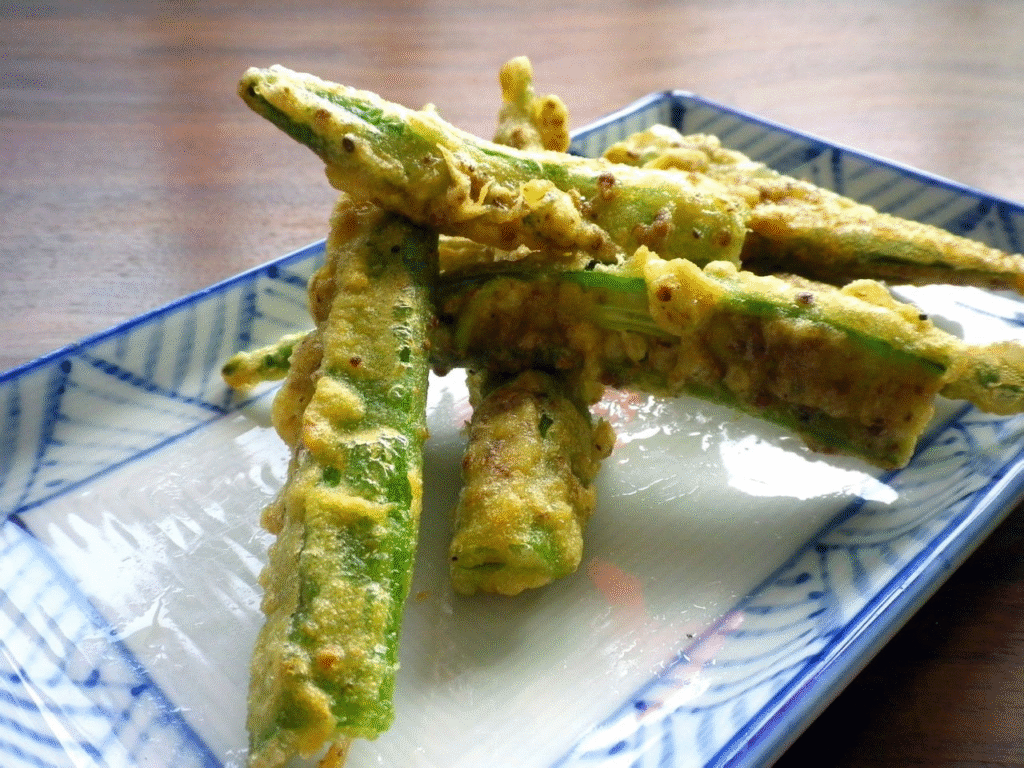Tokyo is regarded by Japanese people as the capital and is also the most developed city in Japan. It brings together all the famous and delicious foods in one place. If you are planning to visit Tokyo, Japan, based on my own and my friends’ experiences, here are a few must-try dishes you shouldn’t miss.
Sushi
Sushi originally began in Southeast Asia as a method to preserve fish using fermented rice. This early form, known as “narezushi,” involved packing fish with salt and fermented rice, allowing it to ferment for months or even years. This process not only preserved the fish but also developed unique flavors.
Around the 8th century, this method was introduced to Japan, where it gradually evolved. During the Edo period (17th to 19th century), with the pace of life speeding up, a new style called “Edomae sushi” emerged—this is the precursor to modern sushi. It used fresh fish paired with vinegared rice, allowing for quick preparation and immediate consumption, making it popular as street food.

Today, sushi comes in many forms, including nigiri (hand-pressed sushi), maki (rolled sushi), and chirashi (scattered sushi), and has become an iconic symbol of Japanese culture enjoyed worldwide.
Where to Eat Authentic Sushi in Tokyo
When it comes to enjoying authentic sushi in Tokyo, there are several renowned and highly regarded places that cater to a variety of budgets and experiences.
First, the Tsukiji and Toyosu fish markets stand out as Tokyo’s largest seafood hubs, hosting numerous sushi establishments known for their exceptionally fresh seafood. In particular, Sushi Dai and Daiwa Sushi inside Tsukiji Market are famous for their freshness and reasonable prices, although they often have long waiting times. At Toyosu Market, Sushisei offers a modern environment and fresh seafood, ideal for visitors looking to experience market sushi.

Next is the Ginza district, home to numerous high-end sushi restaurants such as Sukiyabashi Jiro, a Michelin three-star restaurant requiring advance reservations, and Ginza Kyubey, known for its long history, top-quality sushi, and excellent service.
The Shibuya area offers a wide range of sushi options, from affordable everyday eateries to creative and innovative sushi restaurants. Popular conveyor belt sushi chains such as Sushiro and Kura Sushi have multiple locations throughout Shibuya and Tokyo, providing consistently good quality at budget-friendly prices. Another notable chain is Hamazushi, which also has many outlets across Tokyo and is known for its variety and affordability.
For quick reference, here is a table summarizing these notable sushi spots:
| Area | Sushi Restaurant | Address | Notes |
|---|---|---|---|
| Tsukiji Market | Sushi Dai | 5-2-1 Tsukiji, Chuo-ku | Fresh seafood, long waits |
| Tsukiji Market | Daiwa Sushi | 5-2-1 Tsukiji, Chuo-ku | Reasonably priced, authentic |
| Toyosu Market | Sushisei | 6-6-1 Toyosu, Koto-ku | Modern environment, fresh fish |
| Ginza | Sukiyabashi Jiro | 4-2-15 Ginza, Chuo-ku | Michelin 3-star, reservation needed |
| Ginza | Ginza Kyubey | 8-7-6 Ginza, Chuo-ku | Historic, high quality service |
| Shibuya | Sushiro | Multiple locations in Shibuya | Popular conveyor belt chain |
| Shibuya | Kura Sushi | Multiple locations in Shibuya | Automated ordering, good quality |
| Tokyo-wide | Hamazushi | Multiple locations in Tokyo | Affordable, quick service |
It is recommended to try the “omakase” (chef’s choice) menus at high-end sushi restaurants to fully appreciate authentic sushi culture. Additionally, visiting market sushi restaurants early in the morning allows you to enjoy the freshest seafood available.
Based on the price information displayed on the official websites of the restaurants, I have compiled the data into a table for your reference.
| Area | Sushi Restaurant | Approximate Price Range (per person) | Notes |
|---|---|---|---|
| Tsukiji Market | Sushi Dai | ¥4,000 – ¥8,000 | Affordable, fresh ingredients, long wait times |
| Tsukiji Market | Daiwa Sushi | ¥3,000 – ¥7,000 | Reasonably priced, authentic flavors |
| Toyosu Market | Sushisei | ¥5,000 – ¥10,000 | Modern setting, mid to high price |
| Ginza | Sukiyabashi Jiro | ¥30,000 – ¥40,000 | Michelin 3-star, premium experience, reservation needed |
| Ginza | Ginza Kyubey | ¥15,000 – ¥30,000 | High quality sushi, excellent service |
| Shibuya | Sushiro | ¥1,000 – ¥3,000 | Conveyor belt sushi, budget-friendly |
| Shibuya | Kura Sushi | ¥1,000 – ¥3,000 | Automated ordering, great value |
| Tokyo-wide | Hamazushi | ¥1,000 – ¥3,000 | Quick service, affordable prices |
Ramen
As a Chinese person, I am deeply aware that China has an incredibly rich variety of noodle dishes. Whether it is the hearty noodles of the north or the delicate rice noodles of the south, each regional specialty has its own distinctive character. In contrast, Japanese ramen stands out for its unique focus on the broth. The rich, flavorful soup, often simmered for many hours, becomes the very soul of the entire bowl of ramen.

The rich, flavorful broth leaves a lasting impression with just one sip, and it is definitely worth trying for anyone interested.
Famous Ramen Shops in Tokyo
| Shop Name | Address | Highlights |
|---|---|---|
| Ichiran Ramen (Shibuya Branch) | B1F, Iwamoto Bldg, 1-22-7 Jinnan, Shibuya-ku, Tokyo | Famous tonkotsu ramen with private booths, open late |
| Ippudo (Ginza Branch) | 1F Central Bldg, 4-10-3 Ginza, Chuo-ku, Tokyo | Hakata-style pork broth ramen, popular Tokyo location |
| Tsuta (World’s first Michelin-starred ramen) | 1-14-1 Sugamo, Toshima-ku, Tokyo | Signature soy sauce truffle ramen with refined broth |
| Mutekiya | 1-17-1 Minami Ikebukuro, Toshima-ku, Tokyo | Famous for rich, flavorful soup and generous toppings |
| Konjiki Hototogisu | 1F, Dai-22 Kintei Mansion, 2-4-1 Shinjuku, Shinjuku-ku, Tokyo | Michelin-starred ramen with clam and fish-based broth |
| AFURI (Ebisu Main Shop) | 1-1-7 Ebisu, Shibuya-ku, Tokyo | Known for refreshing yuzu shio ramen |
| Menya Itto | 1-4-17 Higashi Shinkoiwa, Katsushika-ku, Tokyo | Famous for rich chicken tsukemen (dipping noodles) |
| Kikanbo | 2-10-9 Kajicho, Chiyoda-ku, Tokyo | Spicy miso ramen and numbing chili ramen for heat lovers |
| Ginza Kagari | 1F Ginza A Bldg, 4-4-1 Ginza, Chuo-ku, Tokyo | Rich and creamy chicken paitan broth ramen |
| Chuka Soba Aoba (Nakano Main Shop) | 5-58-1 Nakano, Nakano-ku, Tokyo | Classic double broth (seafood and pork) Tokyo-style ramen |
Approximate Prices
| Shop Name | Price Range (JPY) | Notes |
|---|---|---|
| Ichiran Ramen (Shibuya) | ¥980–¥1,300 | Basic tonkotsu ramen ~¥980, extra toppings +¥200–¥300 |
| Ippudo (Ginza) | ¥950–¥1,300 | Shiromaru classic ~¥950, Akamaru modern ~¥1,050 |
| Tsuta | ¥1,300–¥1,900 | Signature shoyu soba ~¥1,300, special topping version ~¥1,900 |
| Mutekiya | ¥1,100–¥1,500 | Rich pork broth ramen ~¥1,100, premium versions +¥300 |
| Konjiki Hototogisu | ¥1,000–¥1,500 | Clam & pork broth ramen ~¥1,000, special ~¥1,400 |
| AFURI (Ebisu) | ¥1,000–¥1,350 | Yuzu shio ramen ~¥1,080, tsukemen ~¥1,200 |
| Menya Itto | ¥900–¥1,200 | Chicken tsukemen ~¥1,000, ramen ~¥900 |
| Kikanbo | ¥900–¥1,300 | Spicy miso ramen ~¥900, full toppings ~¥1,200 |
| Ginza Kagari | ¥1,000–¥1,500 | Chicken paitan ramen ~¥1,100, special ~¥1,500 |
| Chuka Soba Aoba | ¥800–¥1,100 | Standard ramen ~¥800, extra toppings ~¥1,000 |
Tempura
Tempura is a classic Japanese dish consisting of seafood, vegetables, or mushrooms coated in a light batter and deep-fried quickly in vegetable oil until golden and crisp.

The batter is very delicate, typically made with low-gluten flour and cold water, sometimes with a small amount of egg, and is mixed lightly to keep the texture airy. The frying time is short, which helps preserve the natural flavor and moisture of the ingredients.
Popular ingredients include large shrimp, white fish, pumpkin, eggplant, bell peppers, and lotus root. The result is a contrast between the crispy exterior and the tender, juicy interior. Tempura is usually served with a special dipping sauce called tentsuyu, made from dashi broth, soy sauce, and mirin, or simply enjoyed with salt or a squeeze of lemon.
It can be ordered on its own as a side dish, served over rice as tendon (tempura rice bowl), or paired with soba noodles. Tempura is considered one of the most representative dishes of Japanese cuisine, showcasing the emphasis on seasonal ingredients and their natural flavors.
Recommended Tempura Restaurants in Tokyo
| Restaurant Name | Address | Price Range (JPY) | Highlights |
|---|---|---|---|
| Tempura Kondo | 2F Sakaguchi Ginza Bldg, 5-5-13 Ginza, Chuo-ku, Tokyo | ¥15,000 – ¥25,000 (Omakase) | Michelin 2-star restaurant led by Chef Kondo Takahiro, famous for exquisite ingredients and delicate frying technique. Light and flavorful tempura. |
| Tensushi | 7-8-19 Ginza, Chuo-ku, Tokyo | ¥8,000 – ¥15,000 | Combines sushi and tempura, focusing on fresh ingredients and refined preparation. |
| Tempura Tenichi (Asakusa Main Branch) | 1-1-8 Asakusa, Taito-ku, Tokyo | ¥3,000 – ¥7,000 | Historic and affordable tempura shop serving traditional Japanese tempura. |
| Tempura Tenju | 3-6-18 Kyobashi, Chuo-ku, Tokyo | ¥6,000 – ¥12,000 | Classic Japanese tempura emphasizing crisp texture and fresh ingredients. |
| Tempura Amamoto | 6-3-10 Minami Aoyama, Minato-ku, Tokyo | ¥10,000 – ¥18,000 | Known for innovative flavors and elegant presentation; upscale dining environment. |
Wagyu Beef: Unparalleled Quality
If you’re a meat lover, don’t miss Tokyo’s premium wagyu beef. From teppanyaki restaurants where chefs cook steak before your eyes to yakiniku grills where you prepare each slice yourself, wagyu is prized for its tenderness and marbling. Reserve in advance at top places like Ukai-tei for an extraordinary dinner.
Street Food: Quick and Delicious
Explore Tokyo’s vibrant neighborhoods like Asakusa, Ameya-Yokocho, and Harajuku for irresistible street food. Try takoyaki (octopus balls), taiyaki (fish-shaped pastries filled with sweet red bean), and yakitori skewers. For a sweet treat, sample crepes packed with fruit, ice cream, and whipped cream.
Sweets and Desserts: A Taste of Tradition
Finish your culinary adventure with wagashi, traditional Japanese confections often served with green tea. Visit specialty shops to enjoy beautifully crafted sweets like mochi, dorayaki, and daifuku. For modern desserts, check out Tokyo’s famous parfait cafes and patisseries.
Tips for Food Lovers
- Reservations: Many popular restaurants require advance booking.
- Cash: Some smaller eateries only accept cash.
- Etiquette: It’s polite to say itadakimasu before eating and gochisousama deshita after your meal.
Tokyo’s food scene is an unforgettable highlight of any trip to Japan. From centuries-old traditions to cutting-edge innovations, every meal is a chance to discover something new and delicious.